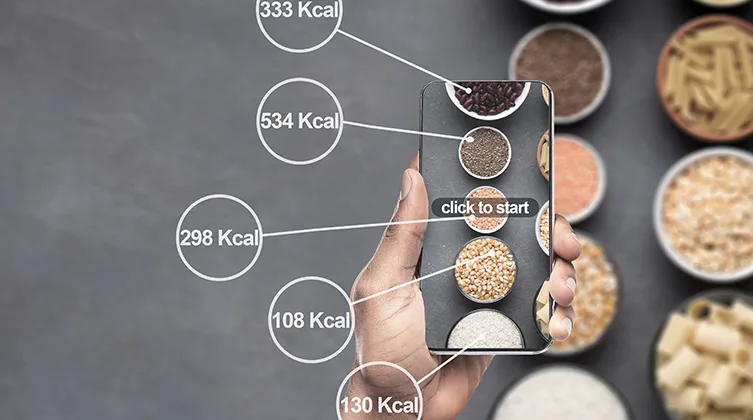There’s a growing trend known as macro counting. Macro counting, also referred to as flexible dieting and IIFYM (“If It Fits Your Macros”), is a practice of knowing, tracking and eating in accordance with certain proportions of macronutrients – that is, the three main energy-yielding nutrients that make up all foods – protein, carbohydrates and fats.
The practice of macro counting began years ago in the bodybuilding world but it is now sprawling into the mainstream. If the more than 8 million #IIFYM hashtags on Instagram are any indication, we can expect to hear more about this trend in coming years.
So how does it work?
Firstly, you need to establish your total daily calories (or kilojoules). This number is unique to you and will vary depending on factors like your age, gender, goals, weight, height and physical activity levels.
Once you have determined this unique number, you can proportion it between the three macros. For example, someone with a total daily calorie intake of 1,800 calories and following a moderately low carb diet of 30% carbohydrates, 25% protein and 45% fat;
Carbohydrates = 1,800*0.3 = 540/3.991 = 135.3 grams
Protein = 1,800*0.25 = 450/3.991 = 112.8 grams
Fat = 1,800*0.45 = 810/9.01 = 89.9 grams
And of course, you would just round it to the nearest whole gram. There you have it! That’s how you calculate macros, simply?
Calculating macros can seem overwhelming at first, but it does get easier. Most nutrition professionals can help you work through the above calculations and numbers or will have access to accurate, professional databases. There are also a growing number of online nutritionists and coaches who do this sort of work. Just be cautious of the types of programs or formulas they use, as some can be more or less accurate than others.
How do you convert your macros into practice?
Perhaps where counting macros gets tough is the implementation stage. After all, we eat food, not macros.
We eat food, not macros.
To see how this works, I’ll put together a one day meal plan for our hypothetical moderate carb individual above.
| Meal | Food | Carbs (g) | Fibre (g) | Protein (g) | Fats (g) | Total (cal) |
| Breakfast | 2x wholemeal toast
40g avocado 1 tbs peanut butter Small low-fat latte |
38.6 | 7.1 | 19.8 | 22.6 | 450 |
| Snack | 30g blueberries
1 almond Quest bar |
8.7 | 15.2 | 21.3 | 9.2 | 232 |
| Lunch | 115g firm tofu
15g baby spinach 40g edamame shelled 25g walnuts ¼ cup quinoa |
14.4 | 9.5 | 21.5 | 48 | 588 |
| Snack | 1 medium apple
1 square dark chocolate |
23.9 | 4.1 | 0.8 | 2.8 | 135 |
| Dinner | 100g chicken breast with bread crumb
½ cup brown rice 60g steamed broccoli 30g steamed carrot |
30.6 | 4.1 | 39.9 | 6 | 347 |
| Total: | 116.4g (26.5%) | 40g (4.5%) | 103.3g (24%) | 88.6g (45%) | 1753 |
The above was done using nutrition software. So the numbers are not necessarily going to add up to match the calculations above – although they’re pretty close! This is the reality of nutrition. It is not a precise science.
There are also complicating factors. An example is the non-digestible carbohydrates (NDC) including dietary fibre and resistance starch. In the meal plan, you’ll see I separated them out. But usually when calculating macros, most people include them within the carbohydrates proportion. This is despite NDC contributing significantly fewer calories than other carbs.
Macro counts are always going to be estimated at best.
Nevertheless, you now have a good idea of what counting macros can look like and how pretty involved it can be.
Lastly, disordered eating & counting macros
Any discussion of calorie counting or food tracking is incomplete without bringing awareness to disordered eating. This type of practice can be a major trigger for susceptible people. In this case, steering clear of macro counting is preferable and mindful eating or the non-dieting approach may be more suitable.
For more on building a healthful relationship with food and your body, please check out my other latest article:





